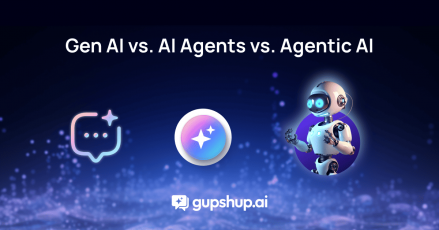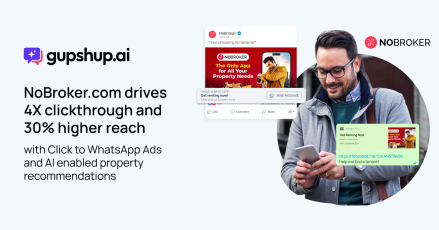Everything You Wanted to Know About SMS API

The “API economy” has transformed the world of software development and technology. The use of APIs or Application Programming Interfaces allows separate software components to communicate effectively without the inherent incompatibility issues created by different software platforms. Simply put, APIs allow multiple applications to connect, “talk” to each other, and access and share business-critical data. APIs empower companies to build, deploy and scale products and services faster and more easily than before.
There are thousands of APIs out there, and one of the most popular and powerful is SMS API. Like other APIs, an SMS API also provides enhanced connectivity, data access, agility, and scalability. It specialises in the programmatic sending of short messages via an SMS gateway.
So what is an SMS API?
This detailed guide will answer this question. It will also pull back the curtain on other frequently raised queries around:
- How an SMS API works
- Benefits of SMS API
- Common use cases
- What is SMS API integration
- How to buy SMS API
- SMS API pricing
But first, let’s start with the most basic aspect: SMS API definition.
What is an SMS API?
Think of an SMS API as a “bridge” between telecom carrier networks and the Internet. Like other APIs, an SMS API is a well-defined software interface that allows organizations to programmatically send short messages via an SMS gateway.
Using an SMS API, web applications can use coding logic and syntax from standard web frameworks to send and receive text messages easily. This way, companies can connect with customers via SMS at scale and at a low cost.
The Importance of SMS Marketing for Modern Brands
Research from various quarters (compiled by Business2Community) has revealed some interesting stats about SMS messaging:
- SMS has an open rate of 98%, compared to the email whose open rate is only 20%
- SMS responses rates are 45%. Email response rates are just 6%
- An average person takes only 90 seconds to respond to a text message, and at least 90 minutes to respond to an email
- 95% of text messages are read within 3 minutes
Moreover, 75% of people would like to receive offers via SMS, and 65% of marketers say that SMS marketing is “very effective” for their brands. In short, SMS is a powerful way for brands to connect with their audience, market their products or services, boost engagement and conversions, and even increase brand awareness, recognition, and recall.
However, it can be expensive and time-consuming to send individual SMS messages to each customer. It can also be time-consuming to create different messages for different purposes and then send them out to each recipient at the right time.
So how can brands leverage the power, reach, immediacy and ubiquity of SMS scalably and cost-effectively?
Answer: SMS API!
How does SMS API Work?
There’s almost always a gap between SMS communications infrastructures and the Internet. An SMS API fills this gap to connect telecom carriers to the Internet. It enables businesses to integrate an SMS messaging platform and carrier networks with their website, or application like Salesforce or WordPress. Such integration is easy with a solution like Gupshup.
Although some coding may be required for SMS API integration, it’s not complex. Further, whether you need to integrate SMS API in Android, or are looking for SMS API integration in PHP, with an API platform like Gupshup, you can easily do both. All you need to do is sign up for an account, create a sender key, install the code library, configure the code with your API key (user name and password), and customise it as needed. Even a junior developer can manage these tasks, that too in just a few hours.
After the integration is complete, an automatic request is made to the API whenever you send an SMS. The process is very similar to visiting a web page from a browser. The API then translates the message into a protocol that mobile carrier networks can understand. The message is then sent to the correct operator, and then on to the final recipient.
For example, if you use the SMS API in India, it will connect your Salesforce or other web application to mobile operators like Vodafone, Airtel or Jio to manage the process of sending text messages. Gupshup understands India’s mobile landscape perfectly, which is why the company is one of the best SMS API providers in India. Similarly, in the U.S, the API will connect the application to AT&T, Verizon, T-Mobile, etc. and do the same thing.
The network operator will send updates about message delivery status, for instance, if the message could not be delivered because the user’s phone is turned off. This status update is then translated into an application-readable structure and sent back to your application.
Once you start using the service to send text messages, recipients will see your Sender ID in their inbox. This ID can be your phone number (long number), shortcode (e.g. 12312) or an alphanumeric string of characters (e.g. PizzaDay). For two-way messaging, a long number or shortcode are required. This number should be registered with a partner like Gupshup. Once the registration is complete, recipients can reply to your messages, and these replies are forwarded over the API.
Benefits of SMS API
Automated Bulk Messaging
An SMS API allows web applications to programmatically send and receive text messages over telecom/mobile carrier networks. Thus, after you integrate the API into your application, you no longer have to manually send SMS messages, because the API will do it for you automatically.
Quickly Enable Web Applications with SMS
An SMS API can be effortlessly integrated into multiple web applications. Without any complex coding, you can automatically send thousands of text messages anywhere in the world in just a few seconds. It thus provides better control, functionality and scalability, and also saves you time and money.
Easy to Scale SMS Messaging
An SMS API is easy to configure and scale. Gupshup is one of the leading SMS API providers in India and dozens of other countries. By leveraging this API, you can easily build messaging capabilities into web applications to increase customer engagement with two-way communications. You don’t even have to have a deep understanding of telecom networks, because the API will take care of all the technical details.
No Internet Needed to Receive Messages
Another advantage of using an SMS API is that recipients don’t require an Internet connection to receive your messages. As long as they have a cell phone and have opted in to receive your texts, they will receive them and derive value from them.
Support for Multiple Use Cases
With an SMS API, you can send efficient, professional, bulk SMS messages for several use cases, including:
- Coupons and exclusive deals
- Special sales announcements
- Limited-time promotions, discounts or offers
- Event invites
- New product launch updates
- Company updates
- Surveys or feedback requests
- One-time Passwords (OTPs) or other verification codes to support two-factor authentication (2FA)
- Appointment confirmations and reminders
- Account notifications
- Time-sensitive messages
- Shipment tracking and delivery notifications
- Critical alerts or important information (e.g. about COVID)
- SMS auto-responders
Another increasingly popular use case of SMS API is customer support with conversational AI chatbots. Through high-quality interactions and automation, chatbots can handle many types of customer support, thus allowing human agents to focus on more high-value tasks for your organisation.
How SMS API Helps Streamline and Scale SMS Marketing
An SMS API like Gupshup is a programmable RESTful API that enables direct carrier connections and automation of SMS workflows. It enables brands to integrate SMS messaging into their existing software platforms and send bulk SMS to hundreds or thousands of recipients quickly and conveniently. They can also optimise the timing and frequency of these messages, and add personalisation such as a recipient’s name in the greeting to promote greater engagement and interest.
With the SMS API, you can send different kinds of SMS messages, such as alerts, reminders, notifications, product announcements, surveys, auto-responders, and more. In addition, you can also send messages with rich media elements such as images, videos, documents, etc. to engage with customers, and drive greater interest, delight, and loyalty. Further, you can do this 24/7, even outside business hours.
Gupshup’s SMS API provides global coverage and supports 190+ countries in North America, South America, Europe, Africa, Asia, and Oceania, so you can send SMS anywhere with low latency and high delivery rates. You can even receive text messages from dozens of countries.
Which Businesses Can Use SMS API?
The simple answer: any business.
An SMS API like Gupshup is ideal for any business or organisation looking to streamline and scale text communication for its global audience. This list includes:
- Restaurants
- Retailers – both brick-and-mortar and eCommerce
- Airlines
- Travel agents
- Hotels and other hospitality businesses
- Shipping and delivery companies
- Banks and other financial institutions
- Utility companies
- Government agencies
- Not-for-profit organisations
- Medical or healthcare services providers, e.g. hospitals, doctors’ offices, dental clinics, etc.
Key Features of SMS API Platforms
An SMS API provides powerful, cost-effective and scalable SMS functionality for your applications. But before choosing an SMS API platform, make sure it includes these features:
Global Reach and Omnichannel Capabilities
The SMS API is most useful when it allows enterprises to engage with recipients across multiple channels and in any country. It should offer direct carrier connections to ensure global reach with reliable delivery, and provide omnichannel capability so you can access every communication channel that your customers use, to send them text messages.
Long Message Concatenation
Ideally, long messages should not be sent as split messages. The API should automatically concatenate long messages across global networks seamlessly.
Delivery Reports
If you plan to send thousands of messages every month and want to check how many were delivered versus how many weren’t, delivery reports are essential. The API should provide real-time delivery notifications for all messages sent globally, allowing you to track delivery rates and account performance. It should also provide real-time feedback and a self-adjusting, quality-based routing engine to ensure the best delivery with minimum latency.
Support for Multiple Character Sets
This feature is especially important if your brand has a global audience. Not everyone will understand English, so if you can send SMS in their preferred language, you will make a better impact. Check that the API comes with built-in GSM and Unicode character set support so you can communicate in multiple languages, and include emojis and symbols in messages. The API should also replace Unicode characters with similar GSM characters to ensure that messages get delivered even to destination networks that don’t support Unicode.
Message Queuing
The best thing about an API is that it allows you to send multiple messages in a single API request. Confirm that the API provider can handle the message queuing for you, so you don’t have to worry about delays or other issues.
Rich Media Support
Today, SMS marketing does not mean “plain text marketing”. With an SMS API, you can easily add photos, videos, audio clips, and other rich media to your messages. Moreover, you don’t need different phone numbers to send and receive SMS, picture messages and MMS. Make sure the API platform supports rich media that can help drive greater customer engagement and loyalty.
Built-in Security and Compliance
Your SMS ecosystem should be compliant with regulatory and data privacy laws. By doing this, you show customers (and regulatory agencies) that you have taken steps to protect customer data, and prevent data theft or fraud. That’s why your SMS API provider must provide built-in compliance and security features such as:
- Phone number masking
- Message body purging
- Debug logs purging
- Smart rate limiting
- Automated opt-out handling
Key Technical Features of SMS API
With SMS marketing and communications, fast API setup and time-to-value are critical. To support this goal, the best API providers will provide detailed documentation such as quick-start guides and tutorials. They will also provide product overviews to cover multiple use cases, and code snippets, so you can quickly set up, customise and deploy the API. You can simply copy and paste these snippets to start sending programmable SMS. For example, here are a few code snippets to use Gupshup’s SMS API.
Some SMS APIs provide server-side SDKs (Software Development Kits) in Java, C#, Python, PHP, Ruby, Node.js, Golang, and many other languages. This language choice enables developers to easily program, customise and integrate the API in a language they feel most comfortable with is most commonly used in your organisation. Moreover, their programming effort will be minimal, since they can access a library of ready-to-use templates to add SMS functionality to applications in very little time.
Despite its simplicity and ease of use, complications can arise when integrating the SMS API into web applications. If developers face issues, the API provider should provide technical support – ideally 24/7 – to ensure that problems are sorted out quickly without impacting your SMS workflows or performance.
SMS API Pricing (in India and Elsewhere)
SMS API costs vary by provider, and by the type of number you use to deliver text messages. In general, the cost of using an SMS API service involves:
- Direct costs of SMS delivery:
This is usually calculated on a per-message basis and is a very minimal amount. For example, per-message charges with Gupshup are as follows:- Brazil: $0.023 per SMS
- Colombia: $0.020 per SMS
- Mexico: $0.028 per SMS
- Peru: $0.027 per SMS
- Indirect costs:
This includes multiple costs, such as:- Re-sends
- Revenue loss due to undelivered messages (e.g. because it led to lower conversions)
- Support costs from undelivered message-related queries
Messages sent over long code, short-code, or toll-free numbers will also have different costs. Recipients’ locations, mobile providers, and message volume also impact the cost. Some providers also charge for incoming messages, which can quickly add up with two-way communications.
The best way to understand the cost of SMS API India or elsewhere is to directly ask the API provider.
Conclusion
If you’re looking to deliver timely and relevant messages, notifications, and marketing information to customers all over the world, you need an SMS API. With an SMS API from a provider like Gupshup, you can programmatically send hundreds or thousands of messages to a global audience.
Gupshup’s SMS API is reliable, scalable, and enables you to send text messages to 190+ countries and communicate with your target audience at scale. Send service alerts and reminders, offers and discount codes, OTPs and other 2FA notifications, and lots more, with a single API. The solution is optimised for speed, quality, and cost and supports automation, omnichannel messaging and built-in compliance. Save on SMS costs as you engage with customers, boost your brand’s presence, and increase conversions, revenues and profits, with an SMS API.
#LetsGupshup to know more.




